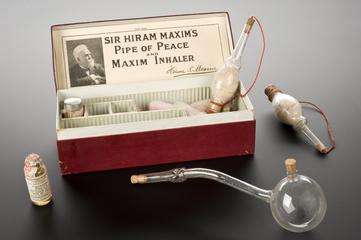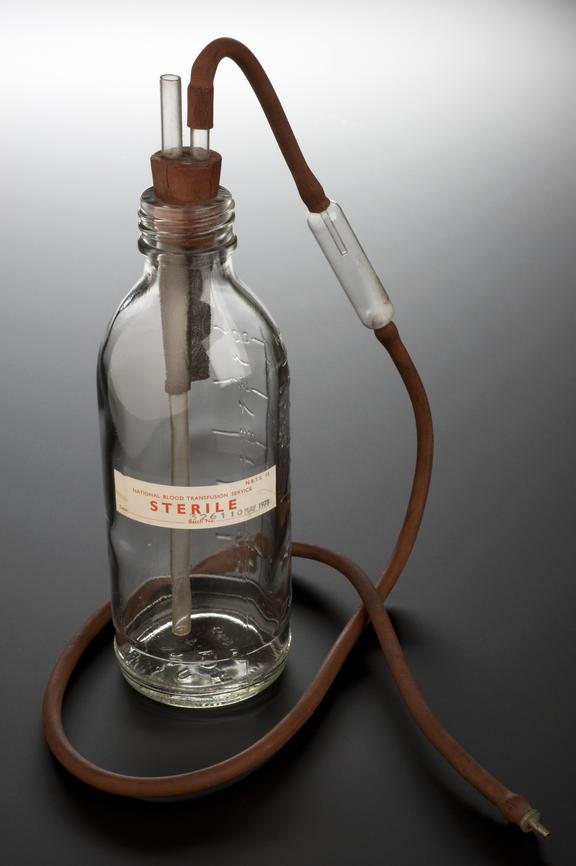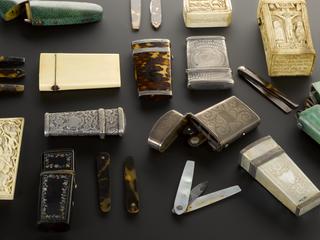




M.R.C. straight sided blood transfusion bottle, capped, with rubber tubing and drop indicator, from the National Blood Transfusion Service, 1978
Blood is taken from one person and given to another in a blood transfusion. From the First World War onwards, it became possible to store blood. Blood banks were used by the Second World War. The first stage saw a single donation stored in a bottle such as this. This bottle was supplied to the National Blood Transfusion Service. The organisation was founded in 1946 to coordinate collecting and storing blood for the nation.
Glass bottles were replaced by disposable plastic bags from 1975. This allowed far wider and more convenient blood distribution. Blood banks are now standard medical practice. They screen blood for diseases as well as store it. There are around 60,000 litres of blood currently held in Britain by The National Blood Service. This figure does not include blood held within hospitals across the country.
Details
- Category:
- Therapeutics
- Object Number:
- 1988-1488
- Materials:
- glass, rubber and metal (gauze)
- Measurements:
-
overall (bottle): 280 mm 75 mm, .593kg
overall (tube): 1010 mm
- credit:
- Whipps Cross Hospital


